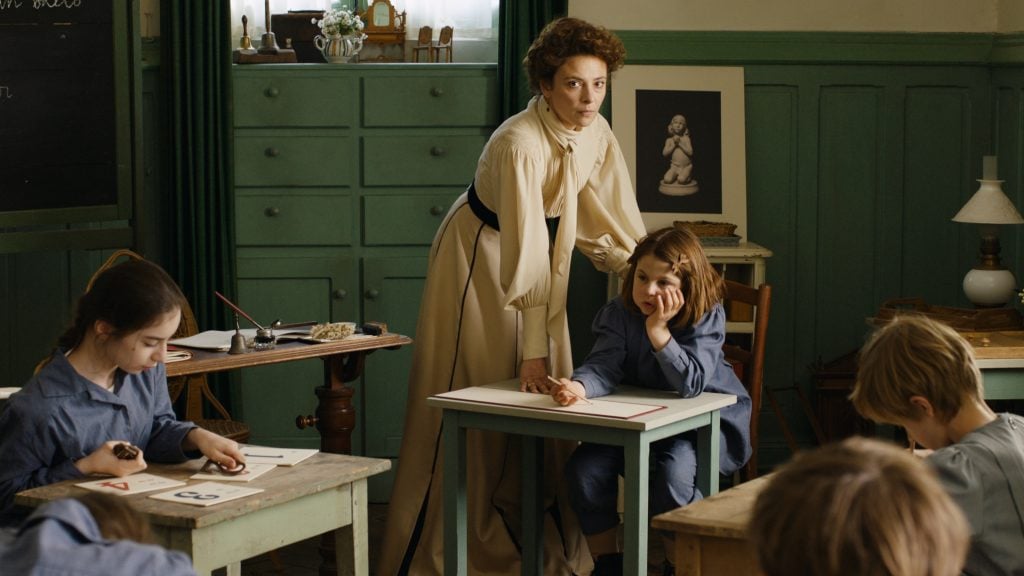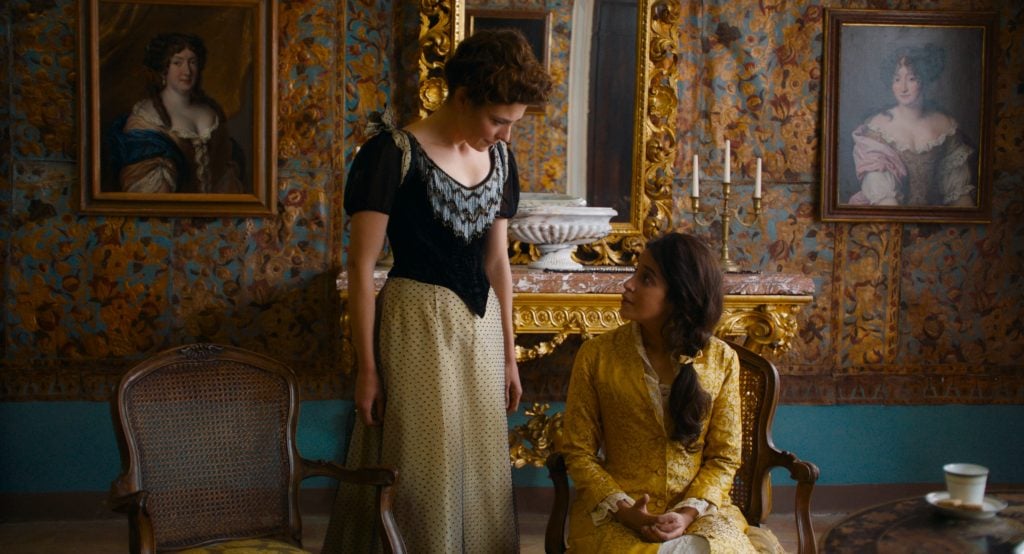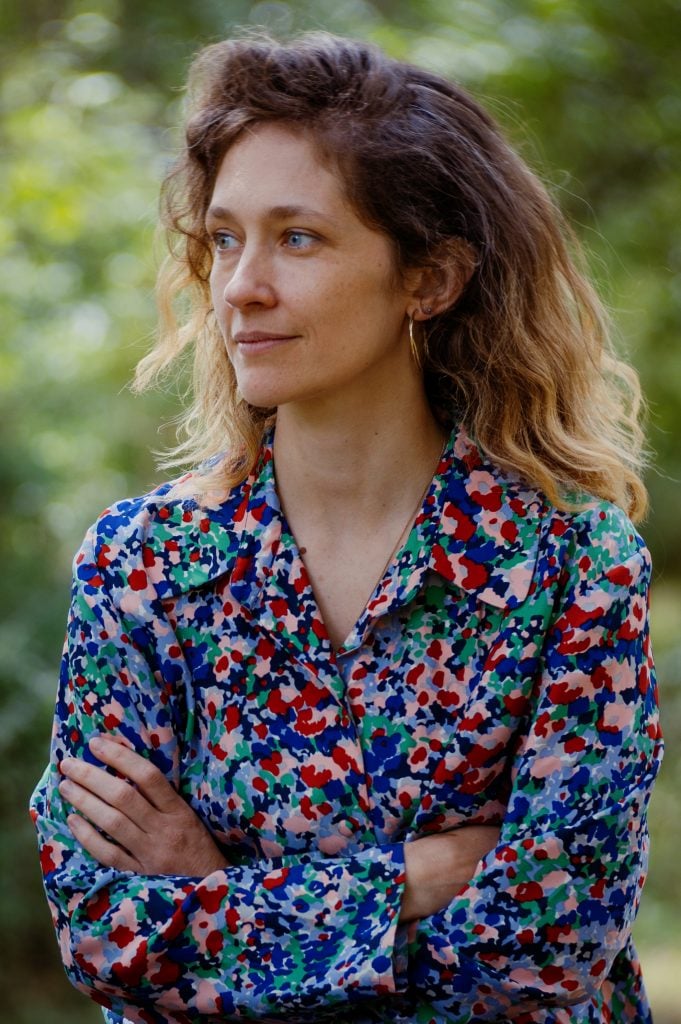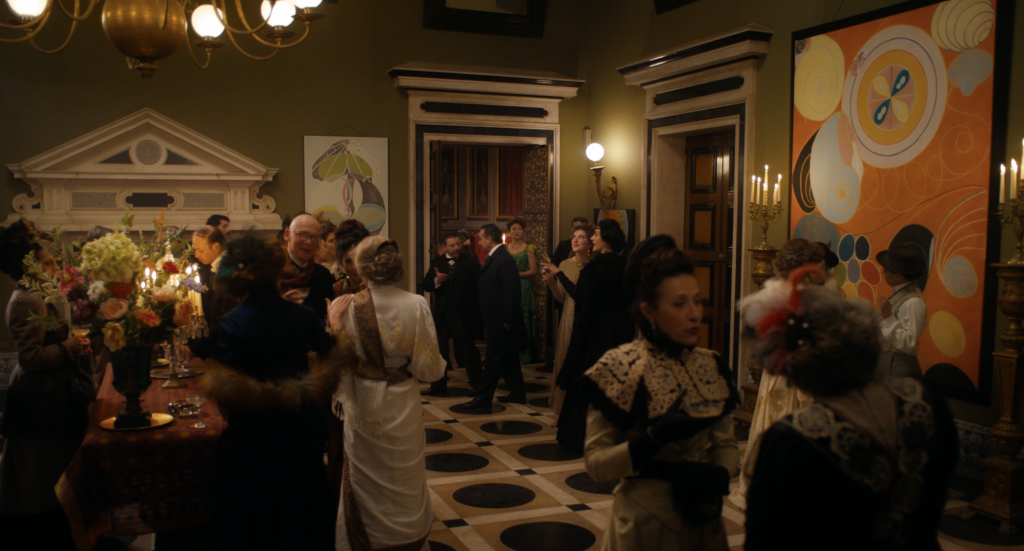Pop Culture
As Seen on ‘Maria Montessori’: Hilma af Klint’s Abstractions Signal a Modernizing World
Both the educator and the artist represented great leaps forward in a society not always welcoming to advances by women.

In all likelihood, the Swedish artist Hilma af Klint and the Italian educator Maria Montessori never met. Both radical during their overlapping lifetimes (af Klint from 1862 to 1944, and Montessori from 1870 to 1952), they lived in different parts of the world.
It’s even less plausible that Montessori would have attended a party at the home of a wealthy patron, where af Klint’s large, abstract paintings hung on the walls of a sumptuous salon. Af Klint rarely showed the color-saturated, abstract geometric and floral paintings she made beginning in 1906, before pioneers like Wasily Kandinsky and Piet Mondrian. Famously, she didn’t want them viewed again until 20 years after her death, as she felt the world wasn’t ready for them.

La Nouvelle Femme or Maria Montessori (2023), scene from the film by Léa Todorov. © Geko Films, Tempesta
But the imagined world of French filmmaker Lea Todorov certainly was, or at least, some avant-garde corners of it were ready. In her first, moving fictional feature, La Nouvelle Femme [The New Woman] (also known as Maria Montessori), about the courageous life of Montessori and her novel approach to teaching children, Todorov imagines precisely such a festive scene.
“I will revolutionize schooling,” said Montessori, played masterfully by Jasmine Trinca, to the collector of af Klint’s masterpieces. The film is a celebration of women and motherhood, set in the context of a modernizing world, and the accomplishments and ambitions of women are prominent in the historical narrative.

Filmmaker Léa Todorov © François Berraldacci
“The idea was to put as much art by women in the film as possible,” said Todorov. In addition to the af Klint canvases, this includes music by the under-recognized post-Romantic composer Mélanie Bonis, as well as portraits of women that are slipped into the décor. “It was important for me to have women somehow coming out of the walls, in all different manners,” said Todorov.
Af Klint was also intensely involved in spiritual esotericism, which she explored with a group of women named The Five. Interestingly, both the artist and Montessori were members of the same Theosophical Society, which attempted to make connections with spirits, allowed female participation, and was active in the suffragette movement. With that in mind, Todorov includes an imagined, mystical séance at the af Klint collector’s home, which Montessori witnesses in a feverish state.

La Nouvelle Femme or Maria Montessori (2023), scene from the film by Léa Todorov. © Geko Films, Tempesta
That party, followed by monochrome, color-saturated shots, represents the arrival of 20th-century modernity and the new art forms of its day, explained Todorov. “Because that’s what Hilma af Klint was also about,” she said. “The first woman and the first painter of abstract work.”
“I love to work with Hilma af Klint, as a rupture from what came before,” she said. “That spirit needed to be in the film itself.”
As Seen On explores the paintings and sculptures that have made it to the big and small screens—from a Bond villain’s heisted canvasto the Sopranos’taste for Renaissance artworks. More than just set decor, these visual works play pivotal roles in on-screen narratives, when not stealing the show.





